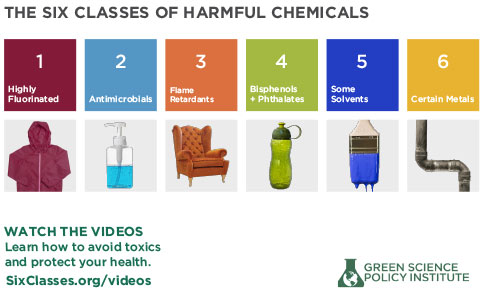The Six Classes concept can help manufacturers, retailers, designers, and large purchasers avoid using whole classes of chemicals of concern in consumer products and building materials. The ideas below are a few examples of how businesses and other organizations can apply the Six Classes concept in practice. Action by consumers is also important — specific suggestions are found in each class video.
Use the Six Classes framework to:
- Educate your workforce
- Prepare salespeople to answer consumer questions
- Align your team around common sustainability goals
- Streamline communications about avoiding these chemicals within your supply chain
- Ensure that purchasing and design specifications are aimed at reducing the use of these groups of chemicals by using our Six Classes Precautionary Lists, contact [email protected] for a copy of the lists.
- Mark progress in reducing use of chemicals of concern in annual sustainability reports
Suggested formats include:
- Integrate use of the videos in training curricula
- Host a brown bag lunch and discuss how the Six Classes could help your organization move towards the goal of reducing chemicals of concern
- Mention the Six Classes in your newsletter and include a link to this website
Example: KEEN Footwear
After learning their shoes had PFAS, KEEN began with consulting our Institute on how to stop using the entire class. The company audited their supply chain, identifying PFAS in hundreds of places, from shoelaces to packing receipts. Strikingly, they found that 65% of these uses were unnecessary and didn’t require any replacement chemicals. For the other uses, they found effective alternatives after considerable time and expense. Watch their video below.


